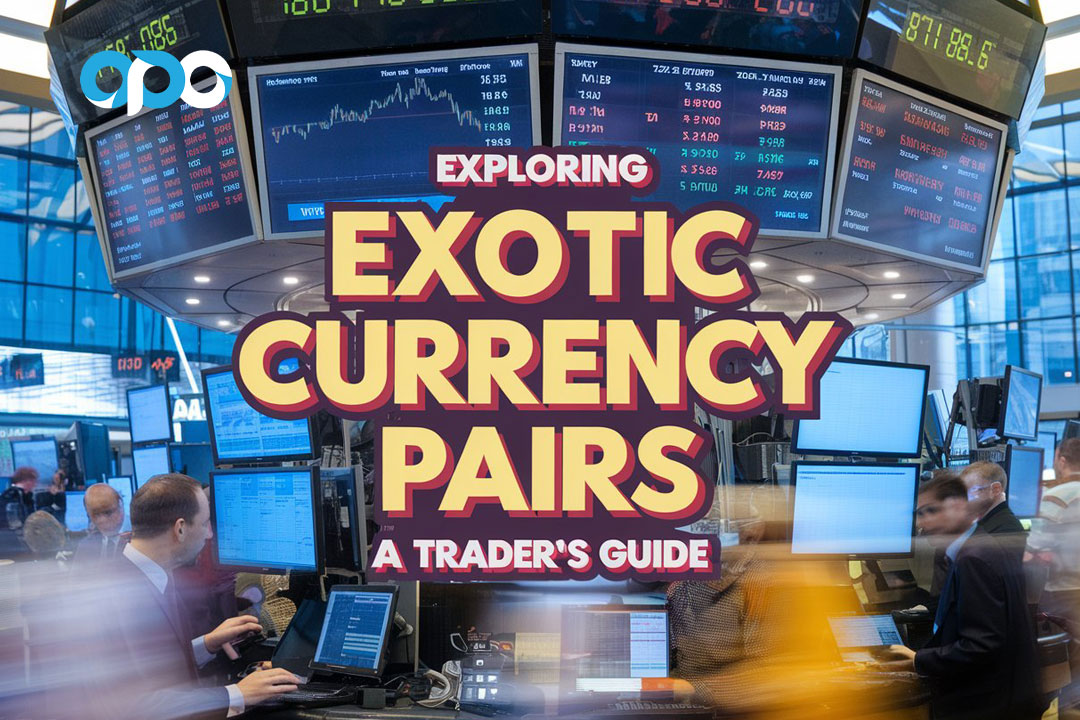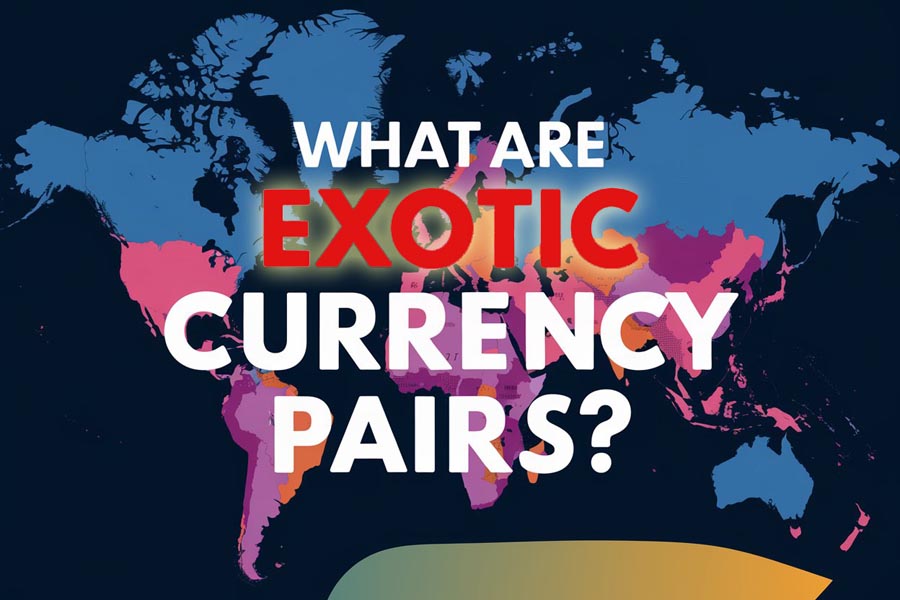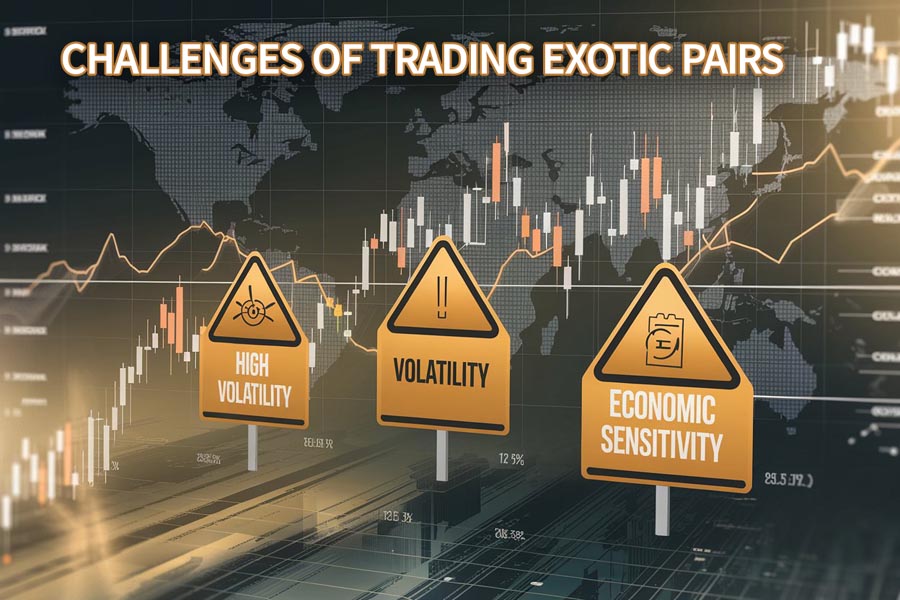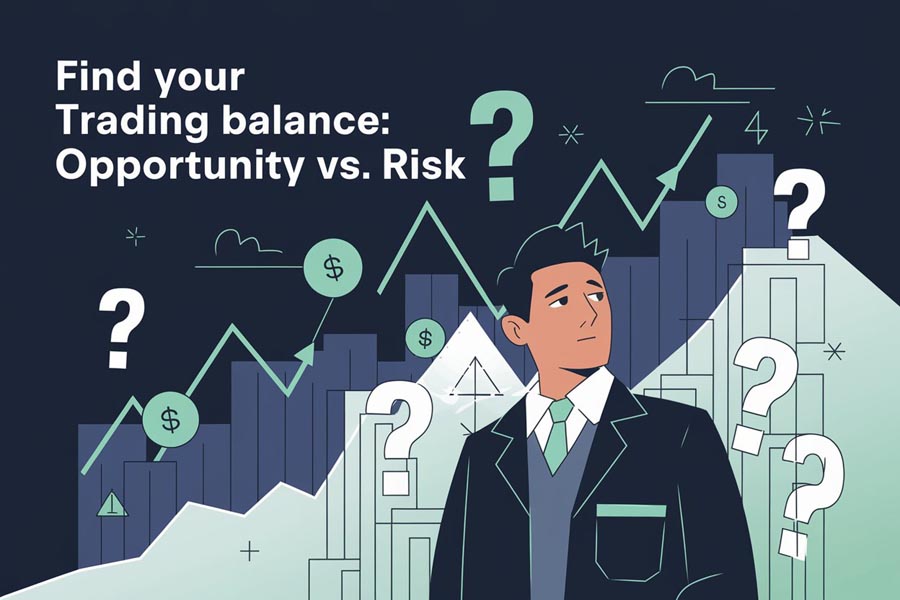Are you ready to break free from the conventional and supercharge your forex trading journey? Welcome to the thrilling world of exotic currency pairs in forex – the hidden gems of the trading universe that could potentially transform your portfolio!

Exotic currency pairs in forex are unique combinations of a major currency with one from an emerging or smaller economy, offering a treasure trove of untapped potential for savvy traders. These lesser-known pairs present a golden opportunity to diversify your trading strategy and potentially reap higher rewards. But what exactly are exotic pairs in forex, and how can they benefit you?
In this comprehensive guide, we’ll unlock the secrets of exotic pairs, equipping you with the knowledge to capitalize on these hidden opportunities in the forex market. Whether you’re a seasoned trader looking to diversify or a newcomer seeking an edge with a regulated forex broker, understanding exotic pairs could be your ticket to forex trading success.
Ready to embark on an exhilarating forex adventure? Let’s dive into the captivating realm of exotic currency pairs and discover how they could revolutionize your trading strategy!
What Are Exotic Currency Pairs?
Exotic currency pairs are combinations that include a major currency (such as USD, EUR, or GBP) paired with the currency of a developing or emerging market economy. These pairs are less frequently traded compared to major and minor pairs, which often leads to increased volatility and unique trading opportunities.

Characteristics of Exotic Pairs
- Higher Volatility: Exotic pairs can experience more significant price swings, creating potential for larger profits (and losses).
- Lower Liquidity: These pairs are traded less frequently, which can result in wider spreads.
- Unique Economic Factors: The economies of emerging markets often have distinct drivers that influence their currencies.
- Increased Risk: Due to their volatility and lower liquidity, exotic pairs carry higher risk compared to major pairs.
Comprehensive List of Exotic Currency Pairs
To give you a broader perspective, here’s an extensive list of exotic currency pairs you might encounter in the forex market:
- USD/TRY (US Dollar/Turkish Lira)
- EUR/PLN (Euro/Polish Zloty)
- USD/ZAR (US Dollar/South African Rand)
- USD/MXN (US Dollar/Mexican Peso)
- USD/SGD (US Dollar/Singapore Dollar)
- USD/THB (US Dollar/Thai Baht)
- EUR/HUF (Euro/Hungarian Forint)
- USD/PHP (US Dollar/Philippine Peso)
- GBP/ZAR (British Pound/South African Rand)
- USD/AED (US Dollar/United Arab Emirates Dirham)
- EUR/CZK (Euro/Czech Koruna)
- USD/KWD (US Dollar/Kuwaiti Dinar)
- AUD/MXN (Australian Dollar/Mexican Peso)
- USD/INR (US Dollar/Indian Rupee)
- EUR/RON (Euro/Romanian Leu)
This list is not exhaustive but covers many of the exotic pairs you might encounter. Each pair has its own unique characteristics and trading considerations.
Advantages of Trading Exotic Pairs
1. Diversification Opportunities
Trading exotic pairs allows you to diversify your forex portfolio beyond the major currencies. This diversification can help spread risk and potentially increase overall returns. According to a study by the Bank for International Settlements, exotic currency pairs account for approximately 10% of daily forex trading volume, offering significant untapped potential.
2. Less Competition
Due to lower trading volumes, exotic pairs often have less competition from institutional traders and algorithms. This can create opportunities for individual traders to capitalize on market inefficiencies. In fact, some exotic pairs see up to 90% less trading volume compared to major pairs, according to forex market data.
3. Potential for Higher Returns
The increased volatility of exotic pairs can lead to larger price movements, potentially resulting in higher profits for skilled traders who can effectively manage risk. Some exotic pairs have been known to move 2-3% in a single day, compared to 0.5-1% for major pairs.
4. Unique Economic Influences
Exotic pairs are often more sensitive to local economic and political events. Traders who stay informed about these factors can gain a significant advantage in predicting price movements. For example, during the 2018 Turkish currency crisis, the USD/TRY pair moved over 30% in a single month, creating both risks and opportunities for traders.
Challenges of Trading Exotic Pairs

1. Higher Spreads
Due to lower liquidity, exotic pairs typically have wider bid-ask spreads compared to major pairs. This can increase trading costs and impact profitability. Spreads on exotic pairs can be 2-5 times wider than those on major pairs.
2. Increased Volatility Risk
While volatility can create opportunities, it also increases the risk of substantial losses. Traders must be prepared for rapid and unexpected price movements. The average daily volatility of exotic pairs can be up to 50% higher than that of major pairs.
3. Limited Market Analysis
Exotic pairs often have less available market analysis and research compared to major pairs. This can make it more challenging to make informed trading decisions. However, this lack of information can also create opportunities for traders who conduct thorough research.
4. Regulatory Concerns
Some exotic currencies may be subject to government interventions or restrictions, which can suddenly impact exchange rates and trading conditions. For instance, the Chinese Yuan (CNY) is closely managed by the People’s Bank of China, affecting its trading dynamics.
Top Exotic Pairs to Consider
1. USD/SGD (US Dollar/Singapore Dollar)
The Singapore dollar is known for its stability, backed by the country’s strong economy and financial sector. Trading USD/SGD can offer insights into Asian market trends. Singapore’s GDP growth rate, which averaged 3.7% from 2012 to 2021, can be a key indicator for this pair.
2. USD/THB (US Dollar/Thai Baht)
Thailand’s growing economy and tourism industry make the Thai Baht an interesting currency to trade against the US Dollar. The tourism sector, which contributed about 20% to Thailand’s GDP before the pandemic, significantly influences this pair.
3. EUR/TRY (Euro/Turkish Lira)
This pair offers exposure to both European and Turkish economic factors, providing unique trading opportunities based on the interplay between these economies. Turkey’s inflation rate, which reached 85.5% in October 2022, has been a major driver of the TRY’s volatility.
4. GBP/ZAR (British Pound/South African Rand)
The South African Rand is influenced by commodity prices, particularly gold. This pair can be attractive for traders looking to capitalize on commodity market trends. South Africa is the world’s largest platinum producer and second-largest palladium producer, making the ZAR sensitive to precious metal prices.
5. USD/MXN (US Dollar/Mexican Peso)
With strong economic ties between the US and Mexico, this pair can be sensitive to trade relations and economic data from both countries. The USMCA (formerly NAFTA) trade agreement significantly impacts this currency pair.
Is Trading Exotic Currency Pairs Right for You?

If you’re just starting out in the forex market, trading exotic currency pairs may not be the best choice. Exotic currencies tend to be much less liquid compared to major and minor currency pairs. Liquidity refers to how easily a currency can be bought or sold without causing significant price fluctuations. Exotic pairs often have lower trading volumes, making them harder to trade efficiently. Additionally, these pairs come with higher spreads, meaning the cost to trade is greater than with more commonly traded pairs.
For new forex traders, it’s generally advisable to focus on major and minor currency pairs. These pairs, like EUR/USD or GBP/JPY, are highly liquid, have tighter spreads, and are easier to trade. Exotic pairs, while riskier due to price volatility and lower liquidity, can offer higher rewards for seasoned traders who know how to manage these challenges effectively. However, they’re best suited for those who have a deeper understanding of forex markets.
Which Major Currencies Should You Trade Exotic Currencies Against?
When trading exotic currencies, they are typically paired with a major currency such as the U.S. Dollar (USD) or the Euro (EUR). This is because exotic-to-exotic currency pairs lack liquidity, making it difficult to execute trades. Most brokers don’t offer pairs involving two exotic currencies due to the lack of demand and the extremely high spreads.
Currencies from countries close to Europe are generally paired with the Euro. For example, the EUR/TRY pair (Euro/Turkish Lira) is a popular exotic pairing. On the other hand, exotic currencies from countries outside of Europe are usually paired with the USD. The USD/ZAR pair (U.S. Dollar/South African Rand) is an example of this. Pairing exotic currencies with majors ensures there is more market activity, better liquidity, and easier access to trades through most forex brokers.
Strategies for Trading Exotic Currency Pairs
1. Fundamental Analysis
Focus on understanding the economic and political factors that influence the countries involved in the exotic pair. Keep an eye on:
- GDP growth rates
- Inflation figures
- Interest rate decisions
- Political stability
- Trade balances
2. Technical Analysis
While fundamental analysis is crucial, don’t neglect technical analysis. Use charts and indicators to identify trends and potential entry/exit points. Some useful tools include:
- Moving averages
- Relative Strength Index (RSI)
- Fibonacci retracements
- Support and resistance levels
3. Risk Management
Given the higher volatility of exotic pairs, robust risk management is essential. Consider:
- Using stop-loss orders to limit potential losses
- Implementing proper position sizing (e.g., risking no more than 1-2% of your account on a single trade)
- Avoiding overleveraging your trades
4. News Trading
Stay informed about economic releases and news events that could impact your chosen exotic pairs. Use an economic calendar to track important announcements. Major news events can cause price movements of 1-3% or more in exotic pairs.
5. Correlation Analysis
Study how your chosen exotic pair correlates with other currency pairs or assets. This can help you identify potential hedging opportunities or avoid overexposure to similar market risks. For example, some exotic pairs have strong correlations with commodity prices, such as the USD/RUB with oil prices.
Tools and Resources for Trading Exotic Pairs
To successfully trade exotic currency pairs, you’ll need access to quality tools and resources. Consider the following:
- Advanced Charting Software: Use platforms that offer comprehensive technical analysis tools and real-time data for exotic pairs.
- Economic Calendars: Stay informed about important economic events and releases that could impact your chosen exotic pairs.
- News Aggregators: Access real-time news from reliable sources covering the countries involved in your exotic pair trades.
- Risk Management Tools: Utilize tools that help you calculate position sizes, set stop-losses, and manage overall portfolio risk.
- Education Resources: Continuously educate yourself about forex trading strategies, particularly those relevant to exotic pairs.
Common Mistakes to Avoid
When trading exotic currency pairs, be aware of these common pitfalls:
- Overleveraging: The higher volatility of exotic pairs can quickly lead to significant losses if you’re overexposed. Stick to a maximum leverage of 1:50 or lower for exotic pairs.
- Ignoring Geopolitical Risks: Always stay informed about political developments that could impact the currencies you’re trading. Political events can cause sudden and dramatic price movements in exotic pairs.
- Neglecting Liquidity Concerns: Be prepared for wider spreads and potential slippage, especially during off-peak trading hours. Some exotic pairs can see spreads widen by 50-100% during low liquidity periods.
- Overtrading: Don’t feel compelled to trade every movement. Wait for high-probability setups that align with your strategy. Quality over quantity is key in exotic pair trading.
- Failing to Adapt: Market conditions for exotic pairs can change rapidly. Be prepared to adjust your strategy as needed. Regular review and adjustment of your trading plan is crucial.
OpoFinance Services: Your Gateway to Exotic Forex Trading
When it comes to trading exotic currency pairs, choosing the right broker is crucial. OpoFinance, an ASIC-regulated forex broker, offers a comprehensive platform for traders interested in exploring exotic pairs. With their advanced trading tools, competitive spreads, and robust risk management features, OpoFinance provides a secure environment for both novice and experienced traders.

One of OpoFinance’s standout features is their social trading service. This innovative tool allows you to follow and copy the trades of successful traders, making it easier to navigate the complexities of exotic pair trading. Whether you’re looking to diversify your portfolio or learn from experienced traders, OpoFinance’s social trading platform can be a valuable resource in your forex journey.
Conclusion
Exotic currency pairs in forex offer a world of opportunities for traders willing to venture beyond the mainstream. While they come with increased risks and challenges, the potential rewards can be significant for those who approach these markets with knowledge, strategy, and discipline.
Remember, successful trading of exotic pairs requires a commitment to ongoing education, careful risk management, and a keen eye for global economic trends. Whether you’re a seasoned forex trader looking to diversify or a newcomer eager to explore unique market opportunities, exotic currency pairs can add an exciting dimension to your trading portfolio.
As you embark on your journey into exotic forex trading, consider leveraging the tools and services offered by regulated brokers like OpoFinance. Their expertise and advanced platforms can provide the support you need to navigate these dynamic markets successfully.
Are you ready to explore the world of exotic currency pairs? Start your research, develop your strategy, and take your forex trading to the next level!
How do exotic currency pairs differ from major and minor pairs?
Exotic currency pairs typically involve a major currency paired with the currency of an emerging or smaller economy. Unlike major pairs (which involve the world’s most traded currencies) or minor pairs (which include major currencies outside the US dollar), exotic pairs are less frequently traded. This lower liquidity often results in higher volatility and wider spreads compared to major and minor pairs.
What are the best times to trade exotic currency pairs?
The best times to trade exotic currency pairs often coincide with the local market hours of the countries involved. For example, if you’re trading USD/SGD, the Asian trading session might offer the most liquidity. However, it’s also important to consider overlapping sessions, such as when the Asian and European markets are both open, as these periods can see increased trading activity and potentially more volatile price movements.
Are there any specific economic indicators that are particularly important for exotic currency pairs?
While all economic indicators can be relevant, some are particularly crucial for exotic pairs. These include:
Interest rate decisions by the central bank of the emerging market country
GDP growth rates, which can indicate the overall health of the smaller economy
Inflation rates, as they can significantly impact the value of emerging market currencies
Trade balance figures, especially for export-dependent economies
Political stability indices, as emerging markets can be more sensitive to political changes
Always research the specific factors that most influence the exotic pair you’re interested in trading, as these can vary significantly from one currency to another.







